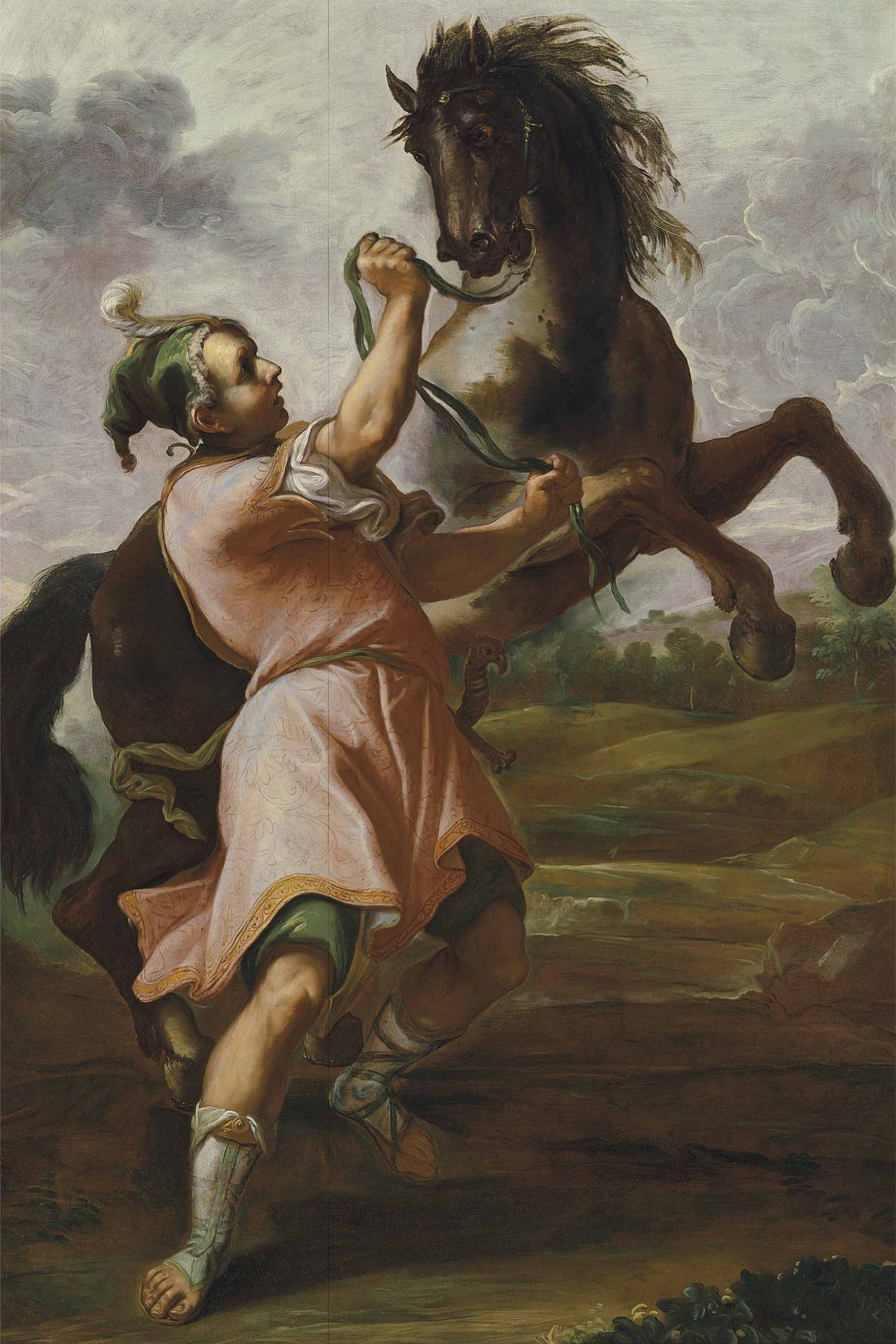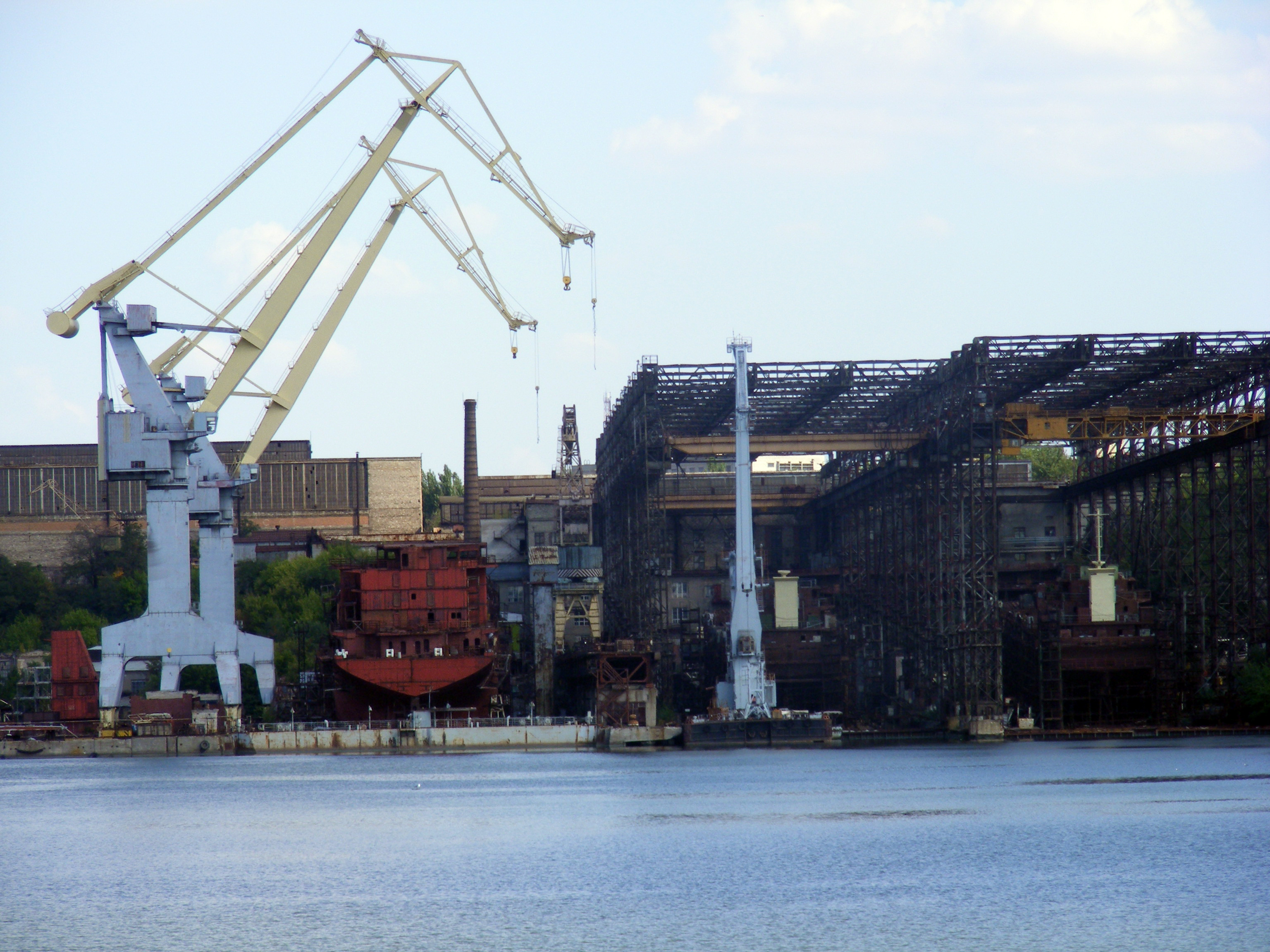|
BTR-4
The BTR-4 "Bucephalus" (, abbreviation of uk, Бронетранспортер, links=no, lit=armoured transporter, translit=Bronetransporter, label=none) is an amphibious 8x8 wheeled Infantry fighting vehicle (IFV) designed in Ukraine by the Kharkiv Morozov Machine Building Design Bureau (SOE KMDB). They have seen action in the Russo-Ukrainian War, the capture of Jurf Al Nasr from ISIL, and the 2022 Russian invasion of Ukraine. History The prototype, which was designed as a private venture, was unveiled at the Aviasvit 2006 exhibition held in Kyiv in June 2006.A serial production started in late 2008, first series of ten BTR entered service in the army of Ukraine in 2009. In 2009, BTR-4 has been presented to the tender for the next infantry combat vehicle for the Spain Ground Forces, to replace the Pegaso BMR. In 2012, the Iraqi MoD ordered 420 Ukrainian BTR-4E IFVs. However, only 88 vehicles were delivered from the order, as the Iraqi MoD cancelled the contract due to qua ... [...More Info...] [...Related Items...] OR: [Wikipedia] [Google] [Baidu] |
BTR-60
The BTR-60 is the first vehicle in a series of Soviet eight-wheeled armoured personnel carriers (APCs). It was developed in the late 1950s as a replacement for the BTR-152 and was seen in public for the first time in 1961. BTR stands for ''Bronetransporter'' (БТР, Бронетранспортер, literally "armoured transporter"). History Origins The BTR-152 and BTR-40, the first two Soviet mass-produced APCs developed after the Second World War, gave the Soviet Army useful experience with wheeled armoured personnel carriers. However, even as they were designed, they were not suited for the needs of the Soviet Army as they lacked a roof (which was added in later versions designated BTR-152K and BTR-40B respectively). The low combat values of the BTR-152 and BTR-40 were exposed when the Egyptian Army used them during the Suez Crisis and also when the Soviet Army used them in the fighting on the streets of Budapest during the Hungarian Revolution of 1956. These were among the ... [...More Info...] [...Related Items...] OR: [Wikipedia] [Google] [Baidu] |
Kharkiv Morozov Machine Building Design Bureau
Kharkiv Morozov Machine Building Design Bureau ( ua, Харківське Конструкторське Бюро з Машинобудування ім. О.О. Морозова, or ХКБМ, KhKBM), often simply called Morozov Design Bureau or abbreviated KMDB, is a state-owned company in Kharkiv, Ukraine, which designs armoured vehicles, including the T-80UD and T-84 main battle tanks, as well as military prime movers. It was responsible for many important Soviet AFVs, including the BT tank series and the T-34, T-54, and T-64 tanks. It is closely associated with the Malyshev Factory. History KMDB started as the Tank Design Team of the Kharkiv Locomotive Factory ''Komintern'' (KhPZ, now Malyshev Factory) in 1927, in Kharkiv, Ukrainian Soviet Socialist Republic, and was responsible for the T-12 and T-24 light tanks. In the 1930s, the design team was designated as the independent T2K Tank Design Bureau, and began work on the BT tank series. In 1936 the plant was re-design ... [...More Info...] [...Related Items...] OR: [Wikipedia] [Google] [Baidu] |
Ukrainian Army
The Ukrainian Ground Forces ( uk, Сухопу́тні військá Збрóйних сил Украї́ни), also known as the Ukrainian Army, are the land forces of Ukraine and one of the five branches of the Armed Forces of Ukraine. They were formed from Soviet Ground Forces formations, units, and establishments, including three military districts (the Kyiv, Carpathian, and Odesa Military Districts), that were on Ukrainian soil when the Soviet Union collapsed. After Ukraine's independence from the Soviet Union in 1991, Ukraine retained its Soviet-era army equipment. The Armed Forces were systematically downsized after 1991 and as a result, it was largely dilapidated by July 2014.In the Army Now: Answering Many Why's , |
Bucephalus
Bucephalus or Bucephalas (; grc, Βουκεφάλας, ; – June 326 BC) was the horse of Alexander the Great, and one of the most famous horses of classical antiquity. Ancient historical accounts state that Bucephalus' breed was that of the "best Thessaly, Thessalian strain", and that he died in what is now Punjab, Pakistan, Punjab, Pakistan, after the Battle of the Hydaspes in 326 BC. The horse was reportedly buried at Jalalpur Sharif, a small town situated a short distance to the southwest of Jhelum. Another account states that Bucephalus is buried in Phalia, a town located near the city of Mandi Bahauddin, which was named after him (Alexandria Bucephalous). Bucephalus was named after Bucephalus (brand), a branding mark depicting an ox's head on his haunch. Taming of Bucephalus A massive creature with a massive head, Bucephalus is described as having a black coat with a large white star on his brow. He is also supposed to have had a "Horse markings#Other ... [...More Info...] [...Related Items...] OR: [Wikipedia] [Google] [Baidu] |
UkrOboronProm
, type = State-owned enterprise , location = , industry = Conglomerate: Defense industry , predecessor = , founded = , founder = , hq_location_city = Kyiv , hq_location_country = Ukraine , num_locations = , num_locations_year = , area_served = Worldwide , key_people = Yuriy Husev (Director General) , products = Munitions, small arms, artillery, explosives, combat vehicles, warships, civil and military aerospace products, engines, missiles, electro-optical devices, CBRN defense equipment , services = , revenue = 1.3 billion $ , revenue_year = 2018 , operating_income = , income_year = , net_income = 28.3 billion ₴ , net_income_year = 2016 , assets = , assets_year = , equity = , equity_year = , owner = , num_employees = <80,000 , num_employees_year = , homepage ukroboronprom.com.ua , footnotes = Ukroboronprom (UOP; u ... [...More Info...] [...Related Items...] OR: [Wikipedia] [Google] [Baidu] |
Slat Armor
Slat armor (or slat armour in British English), also known as bar armor, cage armor, and standoff armor, is a type of vehicle armor designed to protect against high-explosive anti-tank (HEAT) attacks, as used by anti-tank guided missiles (ATGMs) and rocket-propelled grenades (RPGs). Operation Slat armor takes the form of a rigid slatted metal grid fitted around key sections of the vehicle, which disrupts the shaped charge of the warhead by either crushing it, preventing optimal detonation from occurring, or by damaging the fuzing mechanism, preventing detonation outright. Although slat armor is effective against incoming missiles, it does not offer complete protection – as many as 50% of missile impacts are unimpeded by the slat design. Slat armor is more likely to be effective if the cage spacing is less than the diameter of the incoming RPG round, which is commonly 85 mm. Combat history World War II The German Wehrmacht was the first employer of cage armor during W ... [...More Info...] [...Related Items...] OR: [Wikipedia] [Google] [Baidu] |
Infantry Fighting Vehicle
An infantry fighting vehicle (IFV), also known as a mechanized infantry combat vehicle (MICV), is a type of armoured fighting vehicle used to carry infantry into battle and provide direct-fire support. The 1990 Treaty on Conventional Armed Forces in Europe defines an infantry fighting vehicle as "an armoured combat vehicle which is designed and equipped primarily to transport a combat infantry squad, and which is armed with an integral or organic cannon of at least 20 millimeters calibre and sometimes an antitank missile launcher". IFVs often serve both as the principal weapons system and as the mode of transport for a mechanized infantry unit. Infantry fighting vehicles are distinct from armored personnel carriers (APCs), which are transport vehicles armed only for self-defense and not specifically engineered to fight on their own. IFVs are designed to be more mobile than tanks and are equipped with a rapid-firing autocannon or a large conventional gun; they may include side po ... [...More Info...] [...Related Items...] OR: [Wikipedia] [Google] [Baidu] |
30mm
30 mm caliber is a specific size of popular autocannon ammunition. Such ammunition includes NATO standard 30×113mmB and 30×173mm (STANAG 4624), Soviet 30×155mmB, 30×165mm, and 30×210mmB, Yugoslav 30×192mm, Anglo-Swiss 30×170mm, and Czechoslovak 30×210mm rounds which are widely used around the world. Usage Thirty-millimeter ammunition is typically not used against personnel, but rather as an anti-materiel or armor-piercing round. Rounds of this size can be effective against lightly armored vehicles as well as fortified bunkers. It is also a popular caliber for shipboard close-in weapons systems, such as the Russian AK-630 and Dutch Goalkeeper CIWS. The Armed Forces of the Russian Federation use their 30 mm weapons in a variety of vehicles, including the Su-25 attack aircraft, Mi-24 helicopter, Mi-28 attack helicopter, Ka-50 attack helicopter, and the BMP-2, BMP-3, and BTR-90 infantry fighting vehicles. The most modern anti-aircraft gun systems in use by Ru ... [...More Info...] [...Related Items...] OR: [Wikipedia] [Google] [Baidu] |
TPz Fuchs
The TPz Fuchs from Transportpanzer Fuchs is a German armoured personnel carrier originally developed by Daimler-Benz but manufactured and further developed by the now Rheinmetall MAN Military Vehicles (RMMV). Fuchs was the second wheeled armoured vehicle to enter service with the Bundeswehr (West German Military) and it can be used for tasks including troop transport, engineer transport, bomb disposal, Nuclear, Biological and Chemical reconnaissance and electronic warfare. RMMV and its predecessors manufactured 1,236 Fuchs 1, mostly for the German Army. Further development of the design resulted in the Fuchs 2, first shown in 2001. The enhanced Fuchs 2 is currently in production, known customers include Algerian Army, Kuwait Army and the United Arab Emirates Army (UAE). Development In 1977, Rheinstahl Wehrtechnik (which in 1996 became Henschel Wehrtechnik (subsequently Rheinmetall Landsysteme and now Rheinmetall MAN Military Vehicles (RMMV), under licence from Daimler-Benz, ... [...More Info...] [...Related Items...] OR: [Wikipedia] [Google] [Baidu] |
Soviet Union
The Soviet Union,. officially the Union of Soviet Socialist Republics. (USSR),. was a transcontinental country that spanned much of Eurasia from 1922 to 1991. A flagship communist state, it was nominally a federal union of fifteen national republics; in practice, both its government and its economy were highly centralized until its final years. It was a one-party state governed by the Communist Party of the Soviet Union, with the city of Moscow serving as its capital as well as that of its largest and most populous republic: the Russian SFSR. Other major cities included Leningrad (Russian SFSR), Kiev (Ukrainian SSR), Minsk ( Byelorussian SSR), Tashkent (Uzbek SSR), Alma-Ata (Kazakh SSR), and Novosibirsk (Russian SFSR). It was the largest country in the world, covering over and spanning eleven time zones. The country's roots lay in the October Revolution of 1917, when the Bolsheviks, under the leadership of Vladimir Lenin, overthrew the Russian Provisional Government ... [...More Info...] [...Related Items...] OR: [Wikipedia] [Google] [Baidu] |
2A72
A7, A.7, A 7, A07 or A-7 may refer to: Arts and entertainment Music * A7, the A dominant seventh chord used in many rock songs, see dominant seventh chord * A (musical note) * ''A7'' (mixtape), by SCH, 2015 * Avenged Sevenfold, a hard rock/metal band Radio stations * Arutz Sheva, an Israeli radio station meaning Channel Seven Electronics and software * A7, a type of stereoautograph * Altec Lansing A-7, a speaker * Apple A7, a system on a chip used first in the iPhone 5S * ARM Cortex-A7, a processor in the ARM Cortex-A processor family * Samsung Galaxy A7, a smartphone * Sony α7, a family of full-frame mirrorless interchangeable-lens cameras. Military Equipment * A-7 (transceiver), a Soviet VHF radio transceiver developed during World War II * Skoda 37 mm A7, a tank gun produced before and during World War II by the Skoda Works Groups * A7 (Artillery Regiment) * A7, the military staff designation in the continental staff system for air force headquarters staff concerned with m ... [...More Info...] [...Related Items...] OR: [Wikipedia] [Google] [Baidu] |






